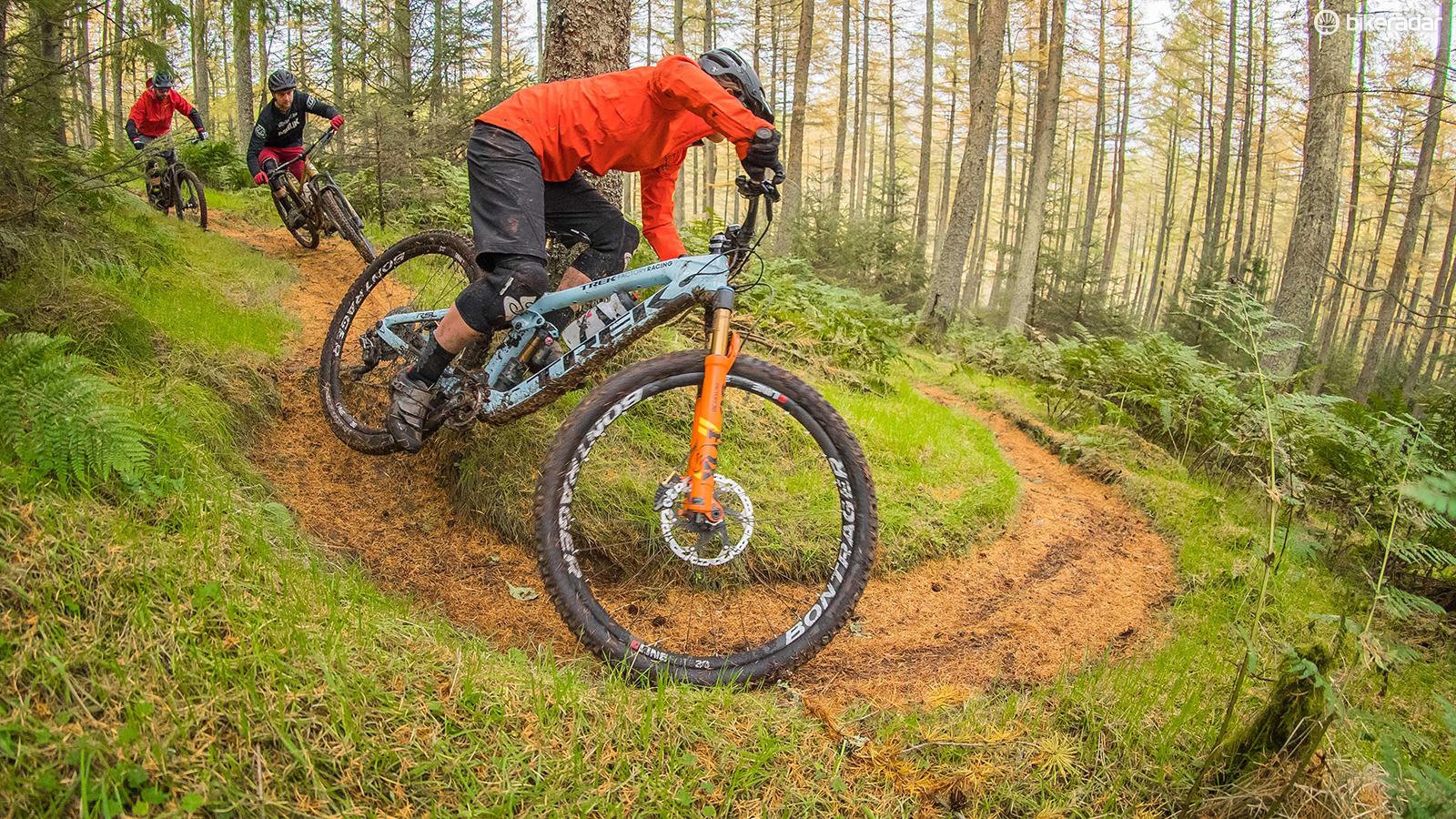Transition SBG (Speed balanced geo) is what I believe popularized short offset.
Transition opts for a short offset to purposely increase mechanical trail, seemingly. As a small bonus, they get more front tire traction from shortening the front-center.
IMO, they have the balance between FC and RC well dialed in their size large frames. Since they shorten the FC/reach in their smaller frames, without also shortening the RC/chainstay, the front has even more traction. While some might think that's a good thing, I'd disagree. This is what I call being "front-heavy" (weight distro wise).
For casual use, like how one would drive a commuter car, front-heavy weight bias is fine. For high performance track use, I'd prefer something like a Porsche 911 with more rearward weight bias (60:40 rear:front, rather than closer to 50:50). The engine on a 911 is situated more rearward, rather than under the front hood. On a bike, this would be akin to a rider shifting their own weight rearward. IMO, a rider in a rearward-scooted position can't control the bike as well as they would in a more neutral/centered athletic position (note: this is measured according to the pull of gravity, going by how far the ass is behind the feet, not by how far the ass is behind the saddle). Instead of moving the rider rearward, why not move the wheels forward, so it's akin to having the weight more on the back? That's what happens when the front wheel gets moved forward by slack angled long forks and longer reach, and that's what I credit for the increase in confidence.
I blame "front-heavy" weight bias (any less than 60:40) on a lot of OTB crashes. You know that feeling of that front wheel dropping immediately on a drop, rather than staying level mid-air? That happens less on a more rear-biased weight distro.
IME, the perfect balance point is very narrow, but very worth chasing after, to the point I would purposely pay attention to the difference of how frames would handle in different sizes. Like I'd recommend a SB150 in size Med, but not in size Small, Large, or XL. I'd recommend a Meta AM 29 in size small, but not Med or Large. I'd recommend a Meta SX in size large, but not any other size. Most of Transition and Santa Cruz I'd recommend in size L. XL/XXL riders probably are finding relatively steep HTA bikes to be more intuitive and versatile, due to better balance points, or scoping out bikes with relatively long chainstays, like Niners.
As I mentioned before, short offset and slack HA make the steering characteristics change, to force leaning instead of steering. This is good for carving. This is flow trail territory, IMO. For janky tight trails, people without high level skills are more likely to be hanging their ass back, modulating their brakes, and maybe steering at low speed. This is where steep HA and longer offset shine more.







